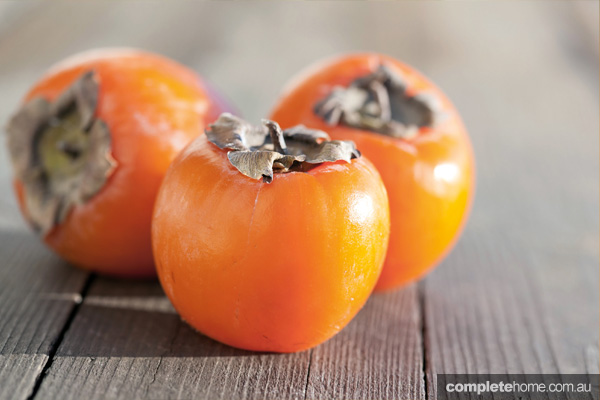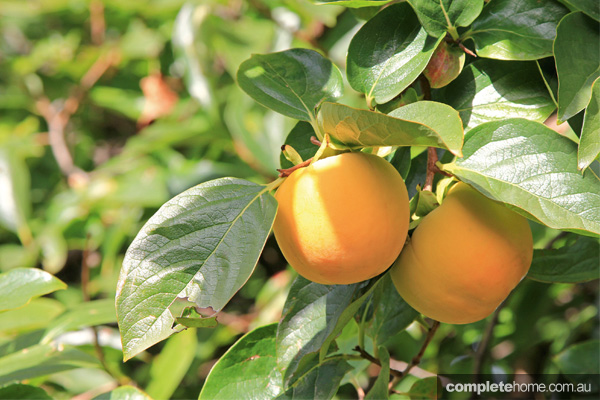The persimmon is a wonderful backyard tree with glowing orange fruit that are in season from early autumn to mid-June.
Persimmons look a little like tomatoes and vary in colour from pale orange to dark red, but their most distinguishing feature is the flower-like calyx made up of four leaves at the top of the fruit and when you cut the fruit horizontally there is a star shape in the flesh.
The first thing to know about growing persimmons is there are two main types: older, astringent varieties that must be soft and really ripe before eating and non-astringent types that can be eaten when they are still crunchy or left until they are ripe and soft. Eat an astringent persimmon when it’s not ripe and it tastes a bit like kerosene, but wait until just the right moment and the flavour is sweet and syrupy.
Astringent persimmons are generally self-fertile, so you need only one tree to produce a good crop. Among the astringent varieties you might like to grow are the heart-shaped ‘Hachiya’, with juicy fruit and virtually no seeds, and ‘Nightingale’, which is as sweet as its name sounds.
Non-astringent (or sweet) types tend to require a cross-pollinating partner to bear a good crop of fruit, unless you grow ‘Fuyu’, one of the few self-fertile varieties, with squat round fruit. Persimmon ‘Ichikikei Jiro’ is another good non-astringent variety with few seeds that can be eaten straight from the tree when it’s still crunchy.
Because the astringent types need to be eaten when they are soft and pulpy they are less versatile in the kitchen and are mostly used in baking recipes or eaten fresh with a spoon. On the other hand, the non-astringent types, which can be eaten crisp or soft, can be used in a variety of dishes, from persimmon and pecan muffins to an autumnal fruit salad.
Growing
Growing: Persimmons prefer to grow in well-drained, slightly acid soils. Plant them in full sun with protection from strong winds. Astringent persimmons perform better in cooler climates, whereas non-astringent types will do well in subtropical gardens.
Harvest: Persimmons are in season from early autumn to mid-June. Cut the fruit gently from the tree with a pair of secateurs. Pulling the fruit off can remove the calyx and damage the fruit.
Ripening: To ripen an astringent persimmon, let it sit on the benchtop until it’s squishy and soft. It should feel like a water balloon that’s just about to burst. If you want to speed up the process, put it in a brown paper bag with an apple. The ethylene gas produced by the apple will hasten ripening.
Health benefits: Persimmons are low in fat and calories but high in dietary fibre. They are also a good source of vitamin C.
Storage tip: Try spooning out the flesh and freezing it.
Originally in Good Organic Gardening, Volume 5, No. 3





